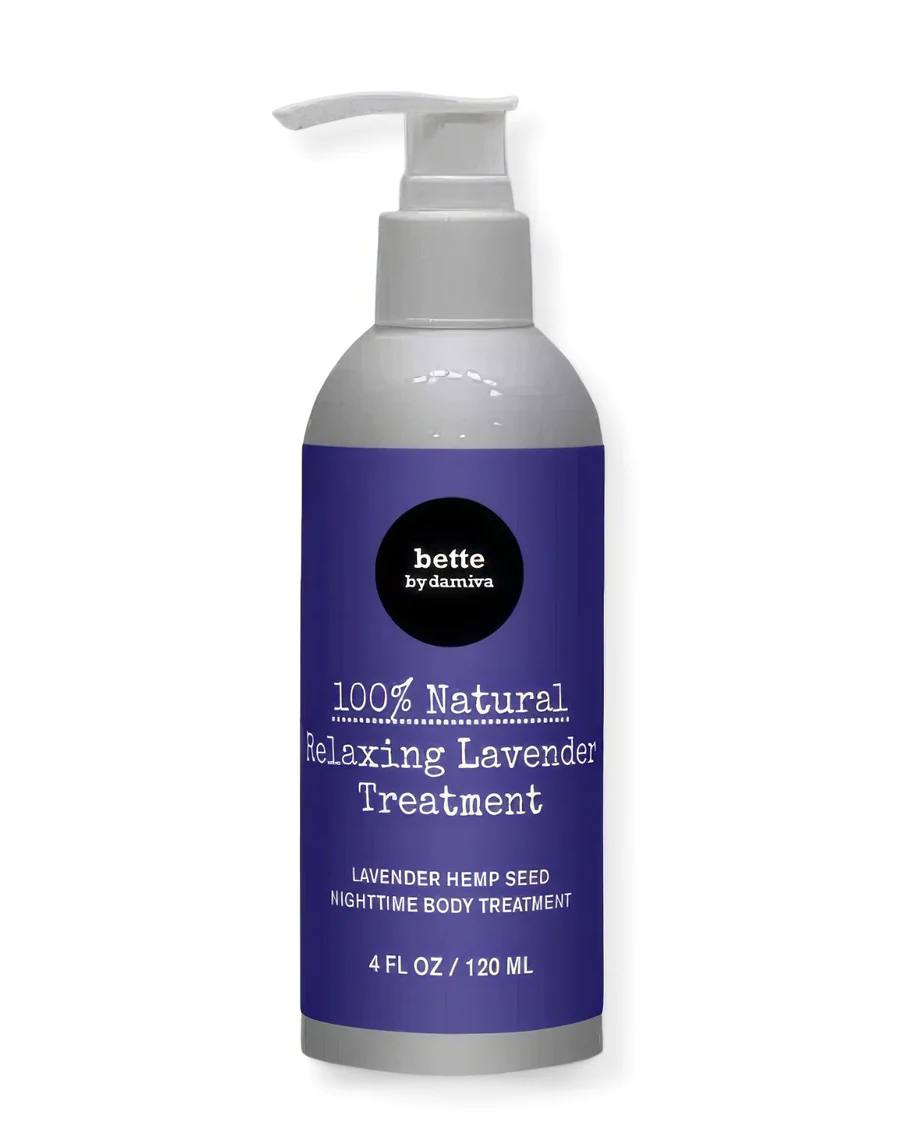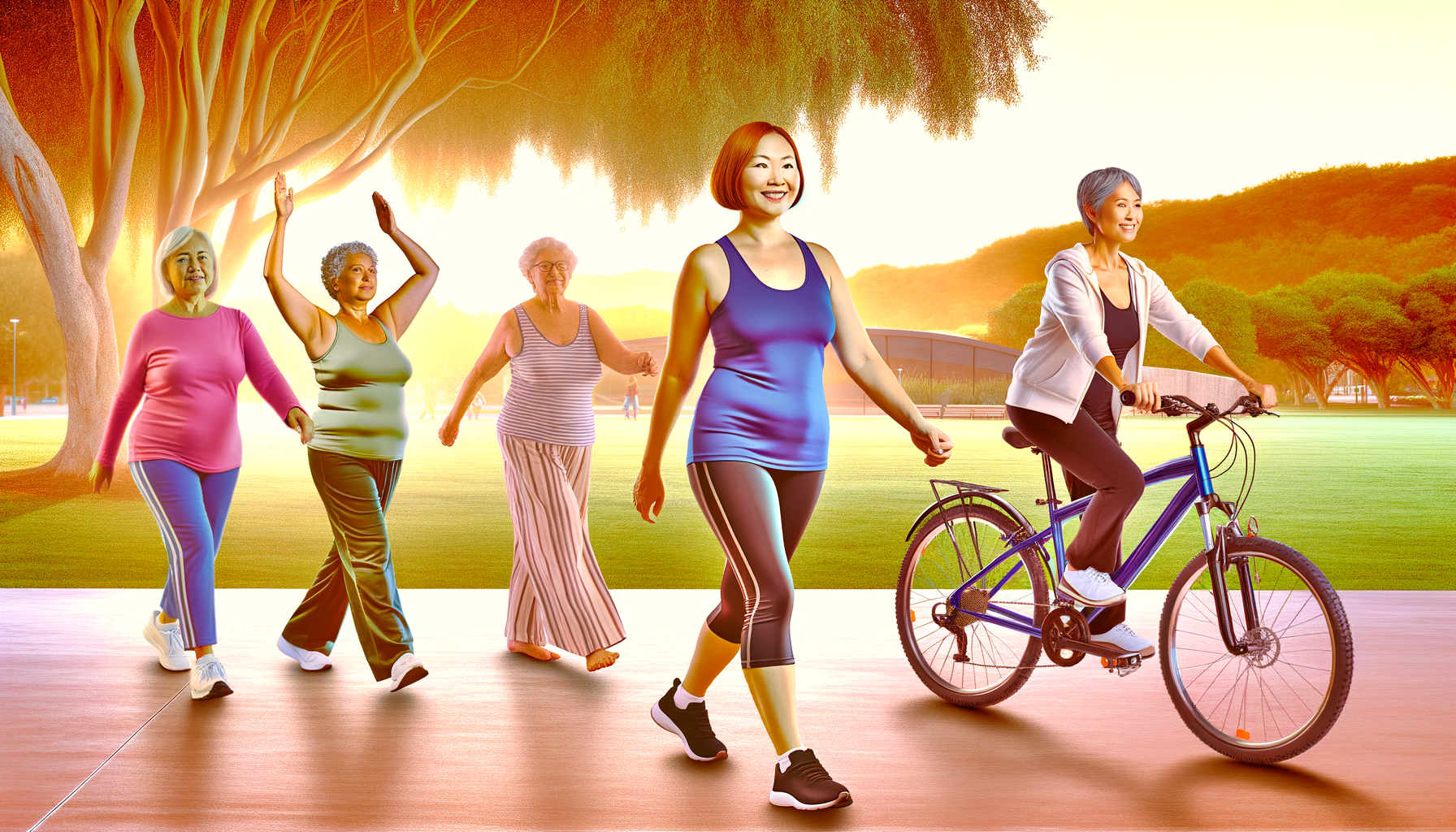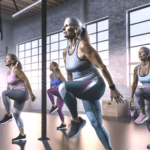Menopause is often referred to as “the change” and for good reason. It marks the end of a woman’s reproductive years and is characterized by the cessation of menstrual periods for twelve consecutive months. This transition typically occurs between the ages of 45 and 55 but can happen earlier or later. Menopause is not an illness but a natural biological process, although it can bring a host of physical and emotional symptoms that can affect a woman’s quality of life.
The Role of Exercise in Menopausal Well-being
Exercise is a cornerstone of health at any stage of life, but it becomes particularly vital during menopause. Regular physical activity helps counteract the weight gain and loss of muscle mass that can occur due to hormonal changes. It also plays a crucial role in improving heart health, encouraging better sleep, reducing anxiety and low mood, and supporting bone health. By engaging in a balanced mix of cardiovascular, strength, balance, and mobility exercises, women can navigate through menopause with greater ease and vitality.
Symptoms and Health Risks Associated with Menopause
Menopause can bring a variety of symptoms, such as hot flashes, night sweats, mood swings, and vaginal dryness. These symptoms are due to the fluctuating and eventual decline in estrogen levels. Health risks also increase, including a higher chance of osteoporosis and heart disease. Exercise not only helps alleviate some of these symptoms but also reduces the risk of developing chronic conditions associated with menopause.
Consulting Healthcare Providers Before Starting New Routines
Before embarking on a new exercise regimen, it’s essential to consult with healthcare providers. They can offer guidance tailored to individual health needs and ensure that the chosen activities are safe and beneficial. For instance, women experiencing severe symptoms or health conditions may require specific exercise modifications. A healthcare provider can also help address any concerns, such as painful sex due to vaginal dryness, which is a common issue during menopause that can affect overall well-being and motivation to exercise.
In conclusion, understanding menopause as a transition phase, recognizing the role of exercise in managing menopausal symptoms, being aware of the associated health risks, and consulting healthcare providers before starting new exercise routines are all critical steps in thriving through menopause. With the right approach, women can harness the power of exercise to maintain their health and well-being during this significant life stage.
Cardiovascular Health and Menopause
Benefits of Aerobic Exercises
During menopause, women often experience changes in their cardiovascular health due to fluctuating hormone levels. Aerobic exercises, also known as cardiovascular exercises, are crucial for maintaining heart health during this time. Engaging in activities such as walking, jogging, swimming, or cycling can significantly improve the efficiency of the heart and lungs, leading to increased stamina and reduced fatigue. Aerobic exercises also play a vital role in enhancing mood, thanks to the release of endorphins, which are natural mood lifters. This is particularly beneficial as menopausal women can be prone to mood swings and depression.

Recommended Types and Duration of Cardio Workouts
For optimal cardiovascular health during menopause, a combination of moderate and vigorous aerobic activities is recommended. Moderate exercises might include brisk walking or leisurely cycling, while vigorous activities could be running or high-intensity interval training (HIIT). The American Heart Association suggests at least 150 minutes of moderate-intensity or 75 minutes of vigorous-intensity aerobic exercise each week. It’s important to start slowly, especially for those new to regular exercise, and gradually increase the duration and intensity to avoid injury and build endurance effectively.
Impact on Metabolism and Weight Management
Menopause often brings about a slowdown in metabolism, making weight management more challenging. Regular aerobic exercise can counteract this effect by boosting the metabolic rate and aiding in the maintenance of a healthy weight. Additionally, aerobic exercises help in preserving lean muscle mass, which is key to a more active metabolism. By incorporating consistent cardio workouts into their routine, menopausal women can combat the tendency to gain weight during this phase of life.
Cardiovascular Disease Prevention
Post-menopausal women are at a higher risk of developing cardiovascular diseases due to a decrease in estrogen levels, which offer some protection against artery and heart diseases. Regular aerobic exercise can mitigate this risk by improving cholesterol levels, lowering blood pressure, and enhancing blood circulation. It’s also effective in managing other risk factors such as obesity and diabetes. By prioritizing cardiovascular health through exercise, menopausal women can significantly reduce their risk of heart attacks, strokes, and other heart-related conditions.
In conclusion, aerobic exercises are a cornerstone of maintaining cardiovascular health during menopause. They offer a plethora of benefits, from mood enhancement and weight management to the prevention of heart diseases. With a variety of activities to choose from and the flexibility of workout durations, there is an aerobic exercise suitable for every menopausal woman looking to protect and improve her heart health.
Strength Training for Bone and Muscle Health
Importance of Muscle Mass and Bone Density
During menopause, women experience a natural decline in estrogen levels, which can significantly impact muscle mass and bone density. Estrogen plays a crucial role in maintaining the strength and health of bones by balancing the process of bone breakdown and renewal. As estrogen levels drop, the rate of bone resorption accelerates, leading to a decrease in bone density and an increased risk of osteoporosis. Similarly, muscle mass tends to decrease with age, a condition known as sarcopenia, which can lead to reduced strength, mobility, and overall functionality.
Effective Strength Training Techniques
Strength training, also known as resistance training, is a powerful tool to combat the loss of muscle mass and bone density. Effective techniques include the use of free weights, resistance bands, weight machines, or bodyweight exercises. Key exercises such as squats, deadlifts, lunges, push-ups, and overhead presses target multiple muscle groups and promote muscle growth. It is essential to focus on proper form and technique to prevent injury and maximize benefits.
Preventing Osteoporosis and Muscle Loss
Regular strength training not only helps in maintaining muscle mass but also stimulates bone formation and slows down bone loss. This is particularly important for postmenopausal women who are at a higher risk of developing osteoporosis. By engaging in weight-bearing and resistance exercises, women can significantly improve their bone health, reducing the likelihood of fractures and maintaining a better quality of life.
Scheduling and Progression Strategies
To reap the full benefits of strength training, it is recommended to incorporate sessions at least two to three times per week, focusing on all major muscle groups. Beginners should start with lighter weights and gradually increase the intensity as strength and endurance improve. It’s also beneficial to vary the exercises and progressively overload the muscles to continue making gains. Adequate rest between sessions is crucial for muscle recovery and growth. As always, before starting any new exercise regimen, consulting with a healthcare provider is advised to ensure the routine is safe and tailored to individual health needs.
By understanding the importance of muscle mass and bone density, employing effective strength training techniques, and implementing strategies to prevent osteoporosis and muscle loss, women can significantly enhance their well-being during menopause. Strength training is not just about building muscle; it’s about fostering resilience, independence, and a vibrant, healthy life.

Feeling You Have a Right to Safe Beauty & Fem Care?
If so, it may be time for a change. It starts with knowledge. We have a few suggestions in our new guides.
Flexibility and Balance: Yoga and Pilates
Combining Movement, Breath, and Mindfulness
Yoga and Pilates are more than just physical exercises; they are comprehensive mind-body practices that intertwine movement, breath, and mindfulness to enhance flexibility and balance. These disciplines encourage participants to focus on their breathing as they move through various poses or exercises, which promotes a state of mental calmness and clarity. The synchronization of breath with movement not only improves oxygenation of the body but also facilitates a deeper connection between the mind and the physical sensations experienced during the practice.
Addressing Menopausal Symptoms with Yoga and Pilates
For women navigating the challenges of menopause, Yoga and Pilates can be particularly beneficial. These low-impact exercises can help manage common menopausal symptoms such as hot flashes, mood swings, and sleep disturbances. The gentle stretching involved in Yoga and Pilates can alleviate muscle and joint stiffness, while the core-strengthening aspects can prevent the onset of back pain and improve overall posture. Moreover, the stress-reducing effects of these practices can have a positive impact on emotional well-being during this transitional phase.
Classes and Resources for Menopausal Women
Many fitness centers and community programs now offer Yoga and Pilates classes specifically designed for menopausal women. These classes are tailored to address the unique needs of this demographic, focusing on poses and exercises that provide the most benefit for menopausal symptoms. Additionally, there are a plethora of online resources, including video tutorials and virtual classes, that allow women to practice in the comfort of their own homes. It is important to seek out qualified instructors who are knowledgeable about the specific considerations for menopausal women.
Improving Sleep and Reducing Stress
One of the most valued benefits of Yoga and Pilates for menopausal women is the improvement in sleep quality and the reduction of stress. Practices such as Yoga Nidra, a form of guided relaxation, can significantly enhance sleep patterns. Pilates, with its emphasis on controlled, mindful movements, can also contribute to better sleep by reducing physical tension and calming the mind. The meditative aspects of Yoga, including deep breathing and mindfulness, are powerful tools for stress management, helping to create a sense of peace and emotional resilience.
In conclusion, Yoga and Pilates offer a holistic approach to managing menopause, providing physical, mental, and emotional benefits. By incorporating these practices into their routine, menopausal women can improve their flexibility, balance, and overall well-being, making these transformative years not only manageable but also enriching.
By the way, something for you, a little gift!!!
I am just in the middle of publishing my book. It’s about How women can balance their hormones. One part is about food and diet, of course.
Follow this link and enter your email.
I will send you this part of the book for free once the book is published. It has many concrete, practical tips and recipes and will help you feel better during menopause or times of Big hormonal fluctuations.
Annette, Damiva Lead for Health & Wellness

Low-Impact Exercises for Joint Health
Identifying Suitable Low-Impact Activities
For women navigating the menopausal transition, joint health becomes a paramount concern. Identifying low-impact exercises that are gentle on the joints while still providing health benefits is essential. Suitable activities include swimming, cycling, walking, and using elliptical machines. These exercises allow for cardiovascular benefits without the high impact that can exacerbate joint pain.
Benefits for Joint Pain and Bone Health
Low-impact exercises are not only beneficial for alleviating joint pain but also play a crucial role in maintaining bone health. Activities such as swimming and cycling can help strengthen the muscles around the joints, providing better support and reducing pain. Moreover, consistent low-impact exercise can help slow down bone density loss associated with menopause, contributing to a reduced risk of osteoporosis.
Transitioning to an Active Lifestyle
Transitioning to an active lifestyle during menopause can be challenging, especially for those experiencing joint discomfort. Starting with low-impact exercises can serve as a stepping stone to a more active life. Begin with short sessions and gradually increase duration and frequency. Incorporating these activities into daily routines, such as taking a walk after dinner or cycling to the store, can make the transition smoother.
Adapting Exercises to Individual Needs
Every woman’s menopause journey is unique, and so are her exercise needs. It’s important to adapt exercises to individual capabilities and limitations. For instance, water aerobics can be an excellent alternative for those with severe joint pain, as the buoyancy of water reduces stress on joints. Consulting with healthcare providers or fitness professionals can provide personalized recommendations to ensure safety and effectiveness.
Mind-Body Practices for Emotional Well-being
Managing Psychological Changes with Mind-Body Exercises
Menopause can usher in a host of psychological changes, including mood swings, anxiety, and depression. Mind-body exercises such as meditation, tai chi, and deep breathing can be powerful tools for navigating these emotional fluctuations. These practices encourage a focus on the present moment, fostering a sense of peace and stability amidst the hormonal turmoil.
Techniques for Stress Reduction and Mental Clarity
Stress can exacerbate menopausal symptoms, making stress reduction techniques an essential component of emotional well-being. Techniques such as Yogic Breathing (Pranayama) and Yoga Nidra promote relaxation and can significantly lower stress levels. Additionally, engaging in regular mindfulness practices can enhance mental clarity, helping to manage the cognitive changes that may occur during menopause.
- Alternate Nostril Breathing (Nadi Shodhana) – Balances the left and right hemispheres of the brain, promoting calmness.
- Guided Imagery – Uses visualization to induce relaxation and reduce stress.
- Body Scanning – Increases body awareness and releases tension from specific body parts.
Incorporating Mindfulness into Daily Routine
Integrating mindfulness into daily life can transform routine activities into moments of self-care. Simple practices such as mindful walking, mindful eating, and even mindful listening can be incorporated with ease. These practices help to anchor the mind in the present, reducing the tendency to ruminate on past or future concerns that may trigger stress.
Enhancing Focus and Inner Calm
Menopause can sometimes lead to difficulties with concentration and focus. Mind-body exercises can enhance cognitive function by improving attention and reducing mental clutter. Techniques such as meditation and focused breathing are particularly effective for cultivating inner calm and improving concentration. Regular practice can lead to a more centered and focused mind, aiding in the navigation of daily tasks with greater ease and efficiency.
In conclusion, mind-body practices offer a holistic approach to managing the emotional and psychological changes of menopause. By incorporating these exercises into your routine, you can foster emotional resilience, reduce stress, and enhance your overall sense of well-being during this transformative phase of life.

Bette 100% All-Natural Relaxing Lavender Body Lotion.
Chemical-Free
Your relaxing night time body moisturizer to leave the day’s stress behind. Decompress and wish your body good night with the calming scent of lavender.
Conclusion: Embracing Exercise for a Thriving Menopause
Summarizing the Benefits of Exercise During Menopause
As we’ve explored throughout this article, exercise is not just a tool for maintaining physical fitness; it’s a lifeline for navigating the often turbulent waters of menopause. Regular physical activity can alleviate many menopausal symptoms, from hot flashes to mood swings, while also reducing the risk of chronic diseases such as osteoporosis and heart disease. By improving cardiovascular health, strengthening bones, enhancing flexibility, and fostering mental well-being, exercise empowers women to take control of their menopausal journey.
Personalized Exercise Plans and Safety Considerations
Every woman’s menopause experience is unique, and so should be her exercise regimen. It’s crucial to tailor your fitness plan to your individual needs, preferences, and any health concerns. Consulting with healthcare providers before embarking on new exercise routines ensures that you engage in activities that are safe and beneficial for your specific situation. Remember, the goal is to find joy and comfort in movement, not to push your body into discomfort or injury.
Celebrating Body Strength and Emotional Resilience
Menopause is a time to celebrate the strength and resilience of your body. It’s an opportunity to appreciate what your body can do, rather than focusing on the changes it’s undergoing. Exercise can be a powerful expression of self-care, a testament to your commitment to your health and well-being. As you build physical strength, you’re also fortifying your emotional resilience, equipping yourself to handle the ups and downs of menopause with grace and confidence.
Encouragement to Begin the Menopause Exercise Journey
If you’re standing at the threshold of menopause, or even if you’re in the midst of it, consider this a gentle nudge to embrace exercise as a companion on this journey. Start small if you need to—a brisk walk, a gentle yoga session, or a few minutes of stretching each day can set the foundation for a more active lifestyle. The key is to begin, to take that first step towards a thriving menopause. With each movement, you’re not only enhancing your physical health but also nurturing your spirit, empowering yourself to live fully and vibrantly during this transformative phase of life.









